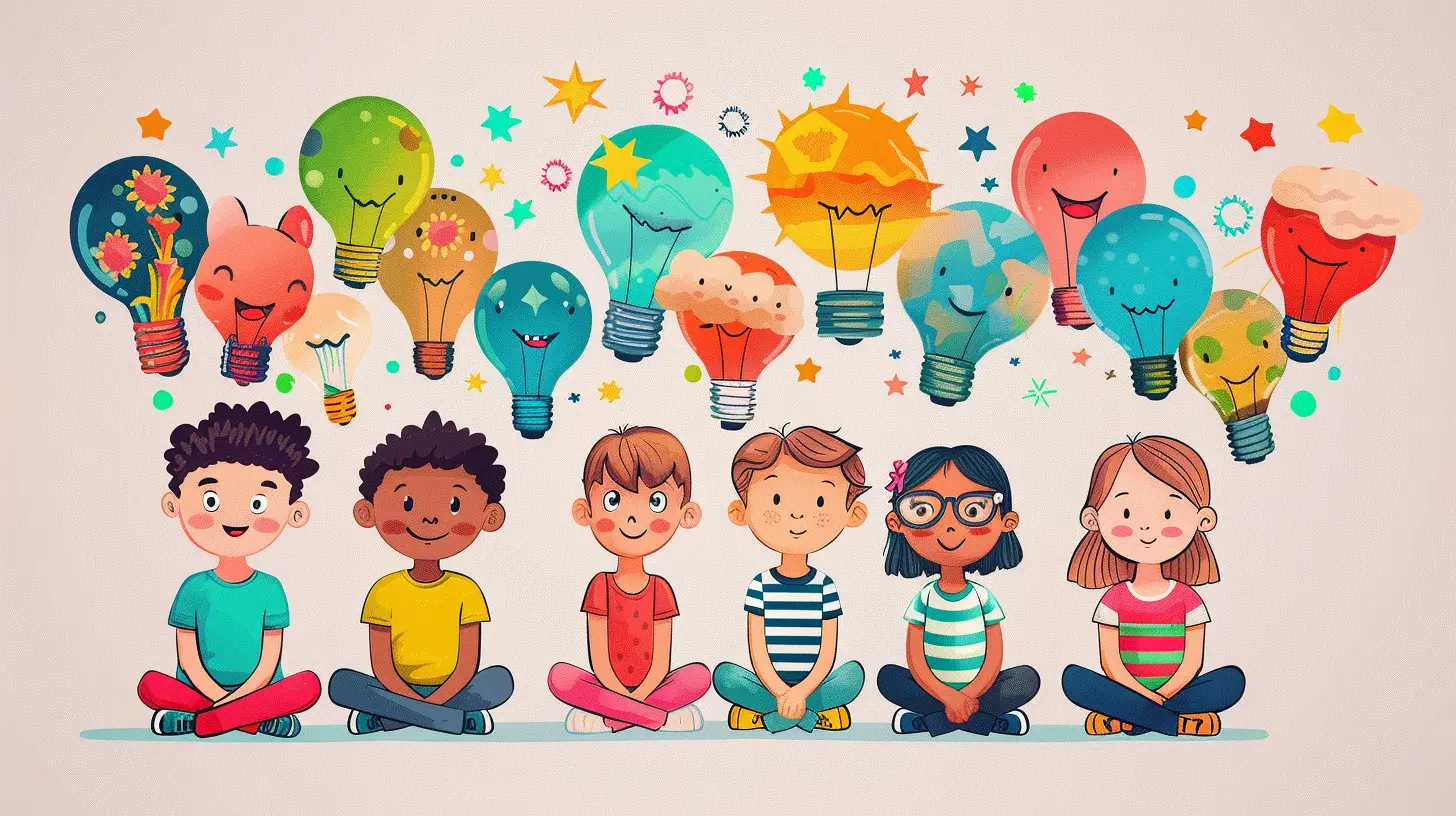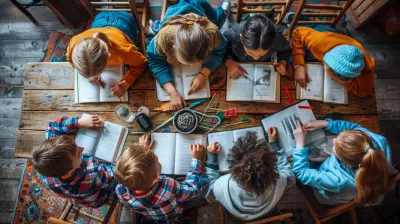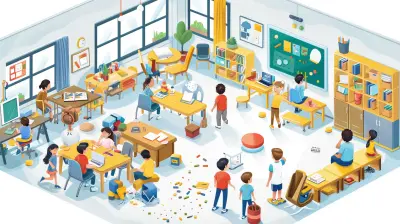"Practical Strategies to Build Emotional Intelligence in the Classroom
30 August 2025
Emotional intelligence (EI) might sound like a buzzword, but in reality, it’s a game-changer—especially in the classroom. You see, teaching isn’t just about equations, grammar rules, or historical facts. It’s also about helping students grow into kind, resilient, and self-aware humans. And that's where emotional intelligence comes in.
In this blog, we’re gonna walk through practical, real-world strategies to build emotional intelligence in the classroom. So, whether you’re a teacher, a school counselor, or an educator in any form, sit tight. We're about to tap into some powerful techniques that won’t just change your classroom… they might just change lives.
What Is Emotional Intelligence, Really?
Before we jump into strategies, let’s break it down. Emotional intelligence is the ability to recognize, understand, and manage our own emotions, and also to recognize, understand, and influence the emotions of others.Daniel Goleman, one of the key figures in popularizing EI, breaks it down into five components:
1. Self-awareness
2. Self-regulation
3. Motivation
4. Empathy
5. Social skills
These might sound a bit adult-y for kids, but trust me, kids are more emotionally intuitive than you think. With the right guidance, they can develop these skills early on.
Why Emotional Intelligence Matters in the Classroom
Let me ask you something. Have you ever tried to teach a lesson to a room full of distracted, angry, or anxious students? It’s like throwing spaghetti at the wall and hoping it sticks.But when students feel understood, safe, and connected—they thrive. Studies show that emotional intelligence is linked to better academic performance, improved relationships, decreased bullying, and reduced behavioral issues. It also helps students handle stress and bounce back from setbacks.
In short? Emotional intelligence isn’t just fluff. It’s foundational.
Strategy #1: Model Emotional Intelligence Yourself
Kids are like little emotional sponges. They absorb what they see. So the first step? Be the example.Share when you’re feeling frustrated but explain how you’re coping. Let them see you take deep breaths, apologize when you lose your cool, and talk openly about your feelings (in age-appropriate ways, of course).
When you own your emotions and navigate them responsibly, you're indirectly teaching them how to do the same.
👩🏫 _Tip: Instead of saying, "I'm fine," when you’re clearly not, try, “I’m feeling a little stressed right now because of all the noise. Let's take a minute to breathe together.”_
Strategy #2: Make Time for Emotional Check-Ins
You know how we ask, “How's everyone doing today?” and get a chorus of “Fine”? Let’s take that to the next level.Create a daily or weekly check-in routine where students can share how they’re feeling—through color charts, journals, emojis, or even a “mood meter.” The key is to normalize talking about emotions and build language around them.
You can do it with:
- Morning Meetings: A short circle-time to talk about feelings.
- Feelings Thermometers: Help kids gauge their emotional temperature.
- Emotion Cards: Visual aids they can use when words fail them.
This creates a safe space where emotions are acknowledged—not squashed.
Strategy #3: Teach the Language of Emotions
Let’s face it: many kids (and adults) only have a handful of words to describe how they feel—mad, sad, happy. That’s not enough.Expand their emotional vocabulary with activities like:
- Emotion vocabulary walls
- “Name That Feeling” games
- Storytime reflections (“How do you think the character felt?”)
Think of emotions as colors—would you want to paint with only three?
🎨 _Help them go from “I feel bad” to “I’m feeling overwhelmed and a little anxious.” That’s power._
Strategy #4: Encourage Self-Regulation Techniques
Emotional intelligence isn’t just about knowing how you feel—it’s about what you do with that feeling.Teach your students simple self-regulation tools:
- Breathing exercises: Try balloon breaths or “smell the flower, blow out the candle.”
- Calm corners: A cozy space with tools like stress balls, coloring pages, or headphones with calming music.
- Mindfulness moments: One-minute meditations or body scans.
You don’t have to be a yoga guru or mindfulness expert. Just start small, and be consistent.
🧘♀️ Bonus: These moments help you regulate, too.
Strategy #5: Promote Empathy Through Literature and Storytelling
Stories are windows into other worlds—and other hearts. Use books, movies, and even real-life classroom situations to spark conversations about empathy.Ask questions like:
- “Why do you think they acted that way?”
- “Have you ever felt like that?”
- “What could they have done differently?”
Walk a mile in someone else’s shoes? Books give us the shoes and the journey.
📚 _Try books like “Have You Filled A Bucket Today?” or “The Invisible Boy” for younger kids to introduce empathy in a beautiful and digestible way._
Strategy #6: Build Strong Student-Teacher Relationships
Students don’t care what you know until they know that you care. When students feel seen and valued, they’re more likely to open up, try harder, and bounce back from mistakes.Simple gestures make a huge impact:
- Greet them by name.
- Notice the small wins.
- Ask about their interests.
- Follow up when you know they’re struggling.
These small deposits into the relationship bank account pay huge dividends.
Strategy #7: Create Opportunities for Collaboration
Group work isn’t just about academics. It’s a playground for emotional growth.By working with others, students learn:
- How to listen (even when they disagree)
- How to compromise
- How to encourage and support peers
Use structured group activities and projects, and make time for reflection afterward. Let them talk about what felt good, what felt challenging, and how they handled them.
👫 _Think of it like social-emotional weightlifting. The more they lift, the stronger they get._
Strategy #8: Celebrate Mistakes as Learning Moments
This one’s big. Many students are terrified of getting things “wrong.” But emotional resilience means bouncing back from failure—not avoiding it.Normalize making mistakes. When a kid messes up, focus on:
- What they learned
- What they can do next time
- How they made it right
Even better? Share your own mess-ups. When kids see that failure is just part of learning, they stop fearing it.
💡 _"Every oops is a chance to grow."_ That should be your class motto.
Strategy #9: Incorporate Social-Emotional Learning (SEL) Programs
There are some fantastic SEL curriculums out there that align with educational standards and provide structured lessons on emotional intelligence. Programs like:- Second Step
- RULER (Yale)
- Zones of Regulation
- MindUP
Even just implementing one lesson a week can create a ripple effect.
👩🏫 Don’t have a program yet? No worries. Start with your own mini-lessons on emotions, empathy, or conflict resolution.
Strategy #10: Involve Families in the EI Journey
EI shouldn’t stop at the classroom door. When families are on board, the impact multiplies.Simple ways to include them:
- Share strategies in newsletters or during conferences
- Offer emotion vocabulary charts for home use
- Invite parents to model healthy emotional conversations at home
Remember: building EI is a team sport. The more teammates, the better.
Think Long-Term: It’s a Journey, Not a One-Time Lesson
This work isn’t about quick fixes or one-and-done activities. Building emotional intelligence is a long-term investment. You won’t see results overnight—but you’ll change the trajectory of your students’ lives.And the truth? It’s just as transformative for you as it is for them.
As you nurture their emotional growth, you’ll start to notice:
- Less conflict
- Deeper relationships
- More compassion
- A happier, healthier classroom climate
That’s the kind of classroom we all dream of, right?
Conclusion: Lead With Heart
Look, the world is tough. Emotions are big. And growing up can be messy. But with your guidance, your students can learn to navigate all of it with grace, confidence, and compassion.When we prioritize emotional intelligence, we’re not just raising better students—we’re nurturing better humans. And what could be more important than that?
So go ahead, lead with heart. Your classroom deserves it… and so do you.
all images in this post were generated using AI tools
Category:
Emotional IntelligenceAuthor:

Eva Barker
Discussion
rate this article
1 comments
Lydia Bell
Emotional intelligence cultivates resilience; nurturing it in classrooms transforms not just students, but futures.
September 16, 2025 at 4:33 AM

Eva Barker
Absolutely! Nurturing emotional intelligence in classrooms equips students with essential skills for resilience, ultimately shaping brighter futures for them. Thank you for your insightful comment!


